Utilize this comprehensive nursing care plan and nursing diagnosis guide to provide effective care for patients experiencing ineffective airway clearance and cough. Gain knowledge on the essential nursing assessment techniques, evidence-based nursing interventions, measurable goals, and appropriate nursing diagnosis to promote patent airways and manage coughing.
Coughing and Airway Clearance
Breathing is a natural process, but some individuals struggle to maintain clear airways and healthy lungs. Coughing is the body’s primary method of clearing the airway, but it can be challenging for clients with various conditions. The lower bronchioles and alveoli have mechanisms to keep the airway open, such as the mucociliary system and macrophages. However, anesthesia, dehydration, and conditions like pneumonia can hinder these mechanisms. Patency of airway clearance can be an acute or chronic issue, with older individuals at higher risk. Nurses play a crucial role in teaching clients and their families about airway clearance interventions to maintain a patent airway, improve breathing comfort, enhance ventilation and oxygenation, and prevent associated risks.
Causes
The following are the common causes or related factors for patients with ineffective airway clearance:
- Excessive production of secretions: Conditions such as pneumonia, bronchitis, or congestive heart failure increase mucus production, making it difficult to clear the airways.
- Impaired mucociliary function: Diseases like cystic fibrosis or chronic smoking damage the cilia, reducing their ability to transport mucus out of the respiratory tract.
- Presence of foreign bodies, tumors, or swelling from infections and allergic reactions can block the airway, hindering airflow.
- Conditions such as muscular dystrophy, amyotrophic lateral sclerosis (ALS), or spinal cord injuries weaken the muscles involved in coughing, making it ineffective.
- Pain from chest trauma or surgery, as well as medications like sedatives and narcotics, can suppress the cough reflex.
- Leads to thickened mucus, which is harder to expectorate and clear from the airways.
- Intubation and the use of ventilators can impair natural airway clearance mechanisms, leading to mucus accumulation if not properly managed.
- Congenital malformations, deviated septum, tracheal stenosis, or other anatomical issues can obstruct airflow and impede mucus clearance.
- Conditions such as coma, sedation, or severe head injury decrease the body’s ability to maintain an open airway and clear secretions.
- Upper or lower respiratory infections increase mucus production and can cause inflammation, obstructing the airways.
- Exposure to smoke, pollutants, dust, or allergens irritates the respiratory tract, leading to increased mucus production and airway constriction.
- Prolonged bed rest or lack of movement can cause mucus to accumulate in the airways, as physical activity helps mobilize secretions.
- Older individuals may experience reduced cough reflex and weaker respiratory muscles, making airway clearance less effective.
- Sedatives, narcotics, and some antihistamines can depress the respiratory system and inhibit effective coughing.
- Severe allergies can cause airway swelling and increased mucus production, obstructing airflow.
- Physical injuries to the neck or chest can disrupt normal airway function and impede clearance.
- Excess body weight can restrict chest expansion and impair respiratory mechanics, making it harder to clear the airways.
Nursing Care Plans and Management
Effective airway clearance and management of ineffective coughing are essential aspects of nursing care for clients with respiratory conditions. Maintaining a patent airway and promoting efficient coughing mechanisms are crucial for oxygenation and the prevention of complications such as pneumonia and respiratory distress. This nursing care plan aims to outline the key strategies and interventions necessary to optimize airway clearance and manage coughing problems in a client.
Nursing Problem Priorities
The following are the nursing problem priorities for clients with ineffective cough and airway clearance:
- Improvement of airway patency. Maintaining good airway patency facilitates adequate ventilation and oxygenation
- Management of hypoxemia. Ensuring optimal delivery of blood-rich oxygen to body tissues to prevent potential organ damage.
- Prevention of respiratory infection or distress. Addressing the client’s susceptibility to the accumulation of mucus, foreign objects, or edema and incorporating strategies to prevent them.
- Education and self-management. Providing education regarding positioning, airway clearance techniques, hydration, infection prevention, and the importance of maintaining good respiratory hygiene.
- Identification of risk factors and potential complications. Identifying these factors helps develop appropriate care plans, interventions, and strategies for effective airway clearance.
- Proper medication administration. Providing education about the appropriate techniques in administering prescribed bronchodilators, mucolytics, expectorants, or nebulized medications.
Nursing Assessment
These signs and symptoms reflect the compromised ability to maintain a clear and open airway, leading to impaired ventilation and oxygenation. Early recognition and prompt nursing interventions are crucial to optimize airway clearance and prevent further respiratory complications. Blockages in the airways are characterized by the following signs and symptoms.
Assess for the following subjective and objective data:
- Abnormal breath sounds (crackles, rhonchi, wheezes). These abnormal sounds heard during auscultation of the lungs indicate the presence of airway obstruction or narrowing, which can interfere with effective airway clearance.
- Abnormal respiratory rate, rhythm, and depth. Irregularities in breathing patterns, such as rapid or shallow breathing, may suggest an inability to effectively clear the airway and maintain adequate ventilation.
- Dyspnea. Shortness of breath or difficulty breathing is a common symptom of ineffective airway clearance, as the obstruction or excessive secretions impede normal airflow.
- Excessive secretions. Increased production of mucus or sputum in the airways can hinder the ability to clear the airway, leading to ineffective airway clearance.
- Hypoxemia/cyanosis. Inadequate oxygenation of the blood resulting from impaired airway clearance can cause low oxygen levels (hypoxemia) and cyanosis, a bluish discoloration of the skin and mucous membranes.
- Inability to remove airway secretions. Difficulty or inability to effectively expectorate or cough out airway secretions can indicate ineffective airway clearance.
- Ineffective or absent cough. A weak or absent cough reflex may be observed when the body fails to generate the force needed to expel mucus or foreign substances from the airway.
- Orthopnea. Difficulty breathing when lying flat is known as orthopnea and may be present in individuals with ineffective airway clearance, as the supine position can exacerbate airway obstruction or secretions.
Nursing Diagnosis
After thorough assessment, nursing diagnoses are formulated to address the challenges of ineffective airway clearance, guided by the nurse’s clinical judgment and understanding of the patient’s unique condition. While nursing diagnoses help organize care, their use may vary across clinical settings. Ultimately, the nurse’s expertise and judgment shape the care plan to prioritize each patient’s needs. Here are examples of nursing diagnoses that may be useful for common concerns associated with ineffective airway clearance:
- Ineffective Airway Clearance related to excessive mucus production secondary to chronic obstructive pulmonary disease (COPD) as evidenced by ineffective cough, audible gurgling, and diminished breath sounds.
- Ineffective Airway Clearance related to impaired swallowing secondary to Parkinson’s disease as evidenced by choking episodes, coughing during meals, and changes in voice tone after eating.
- Ineffective Airway Clearance related to neuromuscular weakness secondary to amyotrophic lateral sclerosis (ALS) as evidenced by decreased chest expansion, cyanosis, and ineffective expectoration.
- Ineffective Airway Clearance related to retained secretions secondary to bronchitis as evidenced by rhonchi, tachypnea, and visible difficulty of breathing.
- Ineffective Airway Clearance related to immobility secondary to post-surgical recovery from lung surgery as evidenced by diminished breath sounds in lower lung fields, productive cough, and increased respiratory rate.
Nursing Goals
By formulating SMART goals, nurses can ensure that the goals are specific, measurable, achievable, relevant, and time-bound, providing a clear framework for assessing progress and promoting effective airway clearance in clients. Here are the common goals and expected outcomes to promote effective airway clearance:
- The client will maintain clear, open airways as evidenced by the absence of abnormal breath sounds, a respiratory rate within the normal range (12 to 20 breaths per minute), a regular and adequate depth of respirations, and the ability to effectively cough up secretions after treatments and deep breaths, as observed and documented by the nurse within the next 24 hours.
- The client will demonstrate increased air exchange by achieving and maintaining oxygen saturation levels within the normal range (above 95%) during rest and activity, as measured by pulse oximetry, within the next 48 hours.
- Within the next 72 hours, the client will accurately classify and utilize at least two methods to enhance secretion removals, such as deep breathing exercises, effective coughing techniques, and appropriate use of respiratory devices, as demonstrated during nursing education sessions and return demonstrations.
- By the end of the week, the client will recognize the significance of changes in sputum, including color, character, amount, and odor, and promptly report any abnormal findings to the nursing staff, as evidenced by verbalization and documentation of understanding during the client’s teaching sessions.
- Within the next two weeks, the client will identify and avoid specific factors that inhibit effective airway clearance, such as smoking, exposure to environmental pollutants, and engaging in activities that worsen respiratory symptoms, as evidenced by a written plan of avoidance strategies and verbal commitment during discharge planning sessions.
Nursing Interventions and Actions
1. Improving airway patency
Airway patency is of utmost importance for adequate oxygenation, ventilation, prevention of respiratory complications, effective coughing, and overall respiratory function. Nurses must prioritize the assessment and maintenance of a patent airway to ensure optimal respiratory well-being for the clients.
Assessment of respiratory status and airway patency
Assess the airway for patency.
Maintaining a patent airway is always the first priority, especially in cases like trauma, acute neurological decompensation, or cardiac arrest. Assessment can be performed using various techniques, such as listening to the client’s breathing, observing the client’s chest and neck movements, or using specialized equipment to measure the client’s oxygen levels (CPR Select, 2023).
Auscultate lungs for the presence of normal or adventitious breath sounds.
Abnormal breath sounds can be heard as fluid and mucus accumulate. This may indicate ineffective airway clearance. Auscultation helps the nurse assess the flow of air through the bronchial tree and evaluate the presence of fluid or solid obstruction in the lung. There are different kinds of adventitious breath sounds, and may include the following:
- Decreased or absent breath sounds. These may indicate the presence of a mucous plug or other major obstruction.
- Wheezing. High-pitched, whistling sound when air moves through narrowed breathing tubes in the lungs. This is heard most commonly in asthmatics and CHF. This may indicate a partial airway obstruction or resistance.
- Rales. Clicking, rattling, or crackling sounds are heard during inspiration and expiration.
- Rhonchi. Continuous low-pitched, rattling lung sounds that often resemble snoring. This is associated with secretions or a tumor.
- Stridor. High-pitched, musical breathing sound caused by a blockage in the throat or voice box (larynx).
- Coarse crackles. Discontinuous popping sounds heard in early inspiration. This may indicate the presence of secretions along larger airways.
- Fine crackles. Discontinuous popping sounds heard in the late inspiration that sounds like hair rubbing together. This is associated with bronchitis, pneumonia, or restrictive pneumonia.
- Expiratory grunt. Frequently occurs in combination with nasal flaring and intercostal or subcostal retractions, associated with increased work of breathing.
Assess respirations. Note quality, rate, pattern, depth, flaring of nostrils, dyspnea on exertion, evidence of splinting, use of accessory muscles, and position for breathing.
A change in the usual respiration may mean respiratory compromise. An increase in respiratory rate and rhythm may be a compensatory response to airway obstruction. The nurse should also observe for the use of accessory muscles, such as the sternocleidomastoid, scalene, and trapezius muscles during inspiration, and the abdominal and internal intercostal muscles during expiration.
- Apnea. Temporary cessation of breathing, especially during sleep.
- Apneusis. Deep, gasping inspiration with a pause at full inspiration followed by a brief, insufficient release.
- Ataxic patterns. Complete irregularity of breathing with irregular pauses and increasing periods of apnea.
- Biot’s respiration. Groups of quick, shallow inspirations followed by regular or irregular periods of apnea (10 to 60 seconds).
- Bradypnea. Respirations fall below 12 breaths per minute depending on the age of the client.
- Cheyne-Stokes respiration. Progressively deeper and sometimes faster breathing, followed by a gradual decrease that results in apnea. The pattern repeats, with each cycle usually taking 30 seconds to 2 minutes.
- Eupnea. Normal, good, unlabored ventilation, sometimes known as quiet breathing or resting, respiratory rate.
- Hyperventilation. Increased rate and depth of breathing.
- Kussmaul’s respirations. Deep respirations with fast, normal, or slow rate associated with severe metabolic acidosis, particularly diabetic ketoacidosis (DKA) but also kidney failure.
- Tachypnea. Rapid, shallow breathing, with more than 24 breaths per minute.
- Obstructive sleep apnea. Apneas that occur repeatedly during sleep secondary to transient upper airway blockage.
Note the presence of sputum; evaluate its quality, color, amount, odor, and consistency.
The unusual appearance of secretions may be a result of infection, bronchitis, chronic smoking, or other conditions. A discolored sputum is a sign of infection; an odor may be present. Thin mucoid sputum frequently results from viral bronchitis. Pink-tinged mucoid sputum suggests a lung tumor. Dehydration may be present if the client has labored breathing with thick, tenacious secretions that increase airway resistance. Profuse, frothy, pink material, often welling up into the throat, may indicate pulmonary edema.
Assess for decreased or asymmetric chest excursion.
A respiratory excursion is an estimation of thoracic expansion and may disclose significant information about thoracic movement during breathing. The nurse places the thumbs along the costal margin of the chest wall and instructs the client to inhale deeply. The nurse observes movement of the thumb during inspiration and expiration, and this should be normally asymmetric. Decreased chest excursion may be caused by chronic fibrotic disease. The asymmetric excursion may be due to splinting secondary to pleurisy, fractured ribs, trauma, or unilateral obstruction.
Performing effective coughing exercises
Note cough and factors that may affect its efficacy and productivity.
Coughing is a mechanism for clearing secretions. An ineffective cough compromises airway clearance and prevents mucus from being expelled. Respiratory muscle fatigue, severe bronchospasm, or thick and tenacious secretions are possible causes of ineffective cough. The cough reflex may also be impaired by prolonged inactivity, the presence of a nasogastric tube, or depressed function of the brain’s medullary centers.
Teach the client the proper ways of coughing and breathing (e.g., take a deep breath, hold for two seconds, and cough two or three times in succession).
The most convenient way to remove most secretions is by coughing. So it is necessary to assist the client during this activity. Deep breathing, on the other hand, promotes oxygenation before controlled coughing. Manually assisted cough further enhances cough peak flow for clients with weak expiratory muscles such as those with neuromuscular disorders or spinal cord injury (Rose et al., 2018).
Utilize an inflatable high-frequency chest wall oscillation (HFCWO) vest to loosen bronchial secretions and mucus plugs.
An inflatable HFCWO vest may be used to provide chest therapy. The vest uses air pulses to compress the chest wall 8 to 18 times per second, causing secretions to detach from the airway wall and enabling the client to expel them by coughing. Research suggests that the vest is equally effective as manual CPT.
Nasotracheal suctioning
Perform nasotracheal suctioning as necessary, especially if the cough is ineffective.
Suctioning is needed when clients are unable to cough out secretions properly due to weakness, thick mucus plugs, or excessive or tenacious mucus production. Tracheal suctioning is performed when adventitious breath sounds are detected or whenever secretions are obviously present. However, unnecessary suctioning can initiate bronchospasm and cause mechanical trauma to the tracheal mucosa.
- Explain the procedure to the client.
This procedure can also stimulate a cough. The frequency of suctioning should be based on the client’s present condition, not on a preset routine, such as every two hours. Over-suctioning can cause hypoxia and injury to bronchial and lung tissue. - Use well-lubricated soft catheters
Using well-lubricated catheters reduces irritation and prevents trauma to mucous membranes. Lubrication of the ends of the catheter with petroleum jelly is especially recommended if suctioning through the nose. Sterile lubricant should be used for nasal suctioning. - Use curved-tip catheters and head positioning (if not contraindicated).
These facilitate secretion removal; from a specific side of the lung (left or right). It is important to use adequate caliber tubes or suction catheters to prevent injuries, dislodgement, or perforation. - Instruct the client to take several deep breaths before and after the nasotracheal suctioning procedure and use supplemental oxygen, as appropriate.
Hyperoxygenation before, during, and after suctioning prevents hypoxia. Preoxygenation with 100% oxygen should be initiated prior to suctioning in preparation for the hypoxia that is precipitated by suctioning, both from mechanical interruption and cessation of oxygen flow briefly. - Stop suctioning and provide supplemental oxygen if the client experiences bradycardia, an increase in ventricular ectopy, and/or significant desaturation.
Oxygen therapy is recommended to improve oxygen saturation and reduce possible complications. It is also recommended to stop if there is increased resistance and reintroduce after a brief period of oxygenation and interruption. A brief, 10-second suction duration is usually recommended to avoid mucosal damage and prolonged hypoxia. - Use universal precautions: gloves, goggles, and mask, as appropriate.
As protection against blood-related modes of transmission, healthcare workers should use universal precautions when coming in contact with the blood of all clients, or bodily fluids containing blood. The use of sterile gloves is recommended. Care should be taken to maintain sterility while suctioning the endotracheal/tracheostomy tubes (Sinha et al., 2023).
Coordinate with a respiratory therapist for chest physiotherapy and nebulizer management as indicated.
Chest physiotherapy includes the techniques of postural drainage and chest percussion to mobilize secretions from smaller airways that cannot be eliminated by means of coughing or suctioning. The goals of chest physiotherapy are to remove bronchial secretions, improve ventilation, and increase the efficiency of the respiratory muscles. The small-volume nebulizer is a handheld apparatus that disperses a moisturizing agent or medication, such as a bronchodilator or mucolytic agent, into microscopic particles, and delivers it to the lungs as the client inhales.
For acute problems, resort to bronchoscopy, as indicated.
Bronchoscopy acquires lavage samples for culture and sensitivity and eliminates mucus plugs. Bronchoscopy is the direct inspection and examination of the larynx, trachea, and bronchi through either a flexible fiberoptic bronchoscope or a rigid bronchoscope. Its purpose is to visualize tissues and determine the nature, location, and extent of the pathological process; to collect secretions for analysis and to obtain a tissue sample for diagnosis; to determine whether a tumor can be resected surgically; and to diagnose sources of hemoptysis.
Clear an upper airway obstruction as indicated.
Attempt to open the client’s airway using head-tilt/chin-lift maneuver.
The nurse may perform the head-tilt/chin lift maneuver by placing one hand on the forehead and placing the fingers of the other hand underneath the jaw and lifting upward and forward. This action pulls the tongue away from the back of the pharynx.
Assess and try to clear the airway as cautiously as possible.
Assess the lenient by observing the chest and listening and feeling for the movement of air. Then, the nurse may use a cross-finger technique to open the mouth and observe for obvious obstructions such as secretions, blood clots, or food particles. If no passage of air is detected, the nurse should start CPR.
2. Provide interventions to manage hypoxemia
Hypoxemia, a decrease in the arterial oxygen tension in the blood, is manifested by changes in mental status, dyspnea, an increase in blood pressure, changes in heart rate, dysrhythmias, central cyanosis (late sign), diaphoresis, and cool extremities. Hypoxemia usually leads to hypoxia, a decrease in oxygen supply to the tissues and cells. The need for oxygen is assessed by arterial blood gas analysis, pulse oximetry, and clinical evaluation.
Assess for changes associated with decreased oxygen saturation levels
Note for changes in mental status.
Increasing lethargy, confusion, restlessness, and/or irritability can be initial signs of cerebral hypoxia. Lethargy and somnolence are late signs. With rapidly developing hypoxia, changes occur in the central nervous system because the neurologic centers are very sensitive to oxygen deprivation. The clinical picture may resemble that of alcohol intoxication, with the client exhibiting a lack of coordination and impaired judgment.
Note for changes in HR, BP, and temperature.
Increased work of breathing can lead to tachycardia and hypertension. The heart pumps faster to deliver oxygenated blood to vital organs and tissues in an attempt to meet the body’s oxygen demand. However, if hypoxemia persists, blood pressure may drop, leading to hypotension. Retained secretions or atelectasis may be a sign of an existing infection or inflammatory process manifested by a fever or increased temperature.
Asses for clubbing of the fingernails and cyanosis.
Clubbing of the fingers appears as sponginess of the nail bed and loss of nail bed angle. It is a sign of lung disease that is found in clients with chronic hypoxic conditions, chronic lung infections, or malignancies of the lungs. Cyanosis, a bluish coloring of the skin, is a very late indicator of hypoxia. Assessment of cyanosis is affected by the room lighting, the client’s skin color, and the distance of the blood vessels from the surface of the skin.
Use pulse oximetry to monitor oxygen saturation; assess arterial blood gases (ABGs)
Pulse oximetry is used to detect changes in oxygenation. Oxygen saturation should be maintained at 90% or greater. Alteration in ABGs may result in increased pulmonary secretions and respiratory fatigue. ABG studies aid in assessing the ability of the lungs to provide adequate oxygen and remove carbon dioxide, which reflects ventilation, and the ability of the kidneys to reabsorb or excrete bicarbonate ions to maintain normal body pH, which reflects metabolic states.
Check for peak airway pressures and airway resistance, if the client is on mechanical ventilation.
Increases in these parameters signal the collection of secretions or fluid and are likely for ineffective ventilation. Continuous positive-pressure ventilation increases the production of secretions regardless of the client’s underlying condition. The nurse assesses for the presence of secretions by lung auscultation at least every two to four hours.
Repositioning to optimize respiratory status
Educate the client on the following:
- Optimal positioning (sitting position)
- Use of pillow or hand splints when coughing
- Use of abdominal muscles for a more forceful cough
- Importance of ambulation and frequent position changes
The proper sitting position and splinting of the abdomen promote effective coughing by increasing abdominal pressure and upward diaphragmatic movement. Controlled coughing methods help mobilize secretions from smaller airways to larger airways because the coughing is done at varying times. Ambulation promotes lung expansion, mobilizes secretions, and lessens atelectasis. If a position cannot be tolerated, the nurse helps the client assume a modified position. When the client changes position, the nurse may explain how to cough and remove secretions.
Position the client upright if tolerated. Regularly check the client’s position to prevent sliding down in bed.
Upright position limits abdominal contents from pushing upward and inhibiting lung expansion. This position promotes better lung expansion and improved air exchange. This increased lung volume also enhances the effectiveness of deep breathing exercises and coughing techniques, which are essential for airway clearance.
Provide postural drainage, percussion, and vibration as ordered.
Chest physical therapy helps mobilize bronchial secretions; it should be used only when prescribed because it can cause harm if the client has underlying conditions such as cardiac disease or increased intracranial pressure. Postural drainage allows the force of gravity to assist in the removal of bronchial secretions. It is used to prevent or relieve bronchial obstruction caused by the accumulation of secretions.
Instruct the client in the use of incentive spirometry.
Incentive spirometry is a method of deep breathing that provides visual feedback to encourage the client to inhale slowly and deeply to maximize lung inflation and prevent or reduce atelectasis. The client should be placed in the proper position (sitting or semi-Fowler) to enhance diaphragmatic excursion; however, this procedure may be performed with the client in any position.
Assist the client during breathing retraining.
Breathing retraining consists of exercises and breathing practices that are designed to achieve more efficient and controlled ventilation and to decrease the work of breathing. These exercises promote maximal alveolar inflation and muscle relaxation; relieve anxiety; eliminate ineffective, uncoordinated patterns of respiratory muscle activity; slow the respiratory rate; and decrease the work of breathing.
Initiating oxygen therapy and endotracheal intubation
Assess the airway before intubation.
There are a few simple and quick methods the clinician can use to systematically evaluate the airway before intubation. Mouth opening can be assessed by fingerbreadths. The client can be asked to open their mouth quickly at the bedside while sitting upright to assess the extent to which the tongue prevents the visualization of the posterior pharynx. The Mallampati classification system helps the clinician identify anatomy that may make intubation more challenging.
Maintain humidified oxygen as prescribed.
Increasing the humidity of inspired air will reduce the thickness of secretions and aid their removal. Oxygen therapy is the administration of oxygen at a concentration greater than that found in the environmental atmosphere. The goal of oxygen therapy is to provide adequate transport of oxygen in the blood while decreasing the work of breathing and reducing stress on the myocardium.
If secretions cannot be cleared, consider the need for intubation.
Readiness for an emergency helps prevent further complications. Intubation may be needed to facilitate the removal of tenacious and copious amounts of secretions and provide a source for augmenting oxygenation. Intubation provides a patent airway when the client is having respiratory distress that cannot be treated with simpler methods and is the method of choice in emergency care. Once the client is intubated, perform the following interventions:
- Start suctioning the airway as determined by the existence of adventitious sounds.
Suctioning clears mucus from the tube and is essential for proper breathing. In clients who are mechanically ventilated, an in-line suction catheter may be used to allow rapid suction when needed and to minimize cross-contamination by airborne pathogens. In-line suctioning decreases hypoxemia, sustains PEEP, and can decrease client anxiety associated with suctioning. - Use a sterile saline solution for the period of suctioning
This promotes the elimination of viscous secretions. Additionally, sterile saline solution is isotonic and compatible with the body’s tissues, therefore they provide a gentle and non-irritating environment for the mucosal lining.
Consider the need for humidifiers in a home care setting.
Humidification of the airway is maintained to help liquefy secretions so that they are easily removed. The nasal cannula or catheter may cause irritation and drying of the nasal and pharyngeal mucosa. Humidity must be provided while oxygen is used to counteract the dry, irritating effects of compressed oxygen on the airway.
3. Preventing the development of respiratory infection or distress.
Inadequate clearance of mucus and secretions allows them to accumulate and pool in the airways. These retained secretions create an environment that is conducive to the growth of bacteria, viruses, and other microorganisms. Additionally, when airway clearance is ineffective, the respiratory tract’s defense mechanisms (cilia, cough reflexes) become compromised, reducing the ability to remove pathogens and debris.
Submit a sputum specimen for culture and sensitivity testing, as appropriate.
Labored breathing may be a sign of respiratory infection that needs an appropriate treatment of antibiotics. Sputum is obtained for analysis to identify pathogenic organisms and to determine whether malignant cells are present. Periodic sputum examinations may be necessary for clients receiving antibiotics, corticosteroids, and immunosuppressive medications for prolonged periods because these agents are associated with opportunistic infections.
Perform cardiopulmonary resuscitation (CPR) maneuvers for clients with complete airway obstruction.
This is used to relieve airway obstructions and to sustain life until definitive treatment can be provided. Use a cross-finger technique to open the mouth and observe for obvious obstructions such as secretions, blood clots, or food particles. If no passage of air is detected, the nurse may begin CPR.
Monitor chest X-ray results.
Normal pulmonary tissue is radiolucent because it consists mostly of air and gases; therefore, densities produced by fluid, tumors, foreign bodies, and other pathologic conditions can be detected by X-ray examination.
Monitor for signs and symptoms of oxygen toxicity.
Oxygen toxicity may occur when too high a concentration of oxygen (greater than 50%) is given for an extended period (generally longer than 24 hours). Clinical manifestations of oxygen toxicity include substernal discomfort, paresthesias, dyspnea, restlessness, fatigue, malaise, progressive respiratory difficulty, refractory hypoxemia, alveolar atelectasis, and alveolar infiltrates evident from chest X-rays.
4. Educate about the identification of risk factors and signs and symptoms of potential complications.
Assess hydration status: skin turgor, mucous membranes, tongue.
Airway clearance is impaired with poor hydration and subsequent secretion thickening. When mucus becomes thickened, it becomes more difficult to mobilize and clear from the airways. Inadequate hydration can also impair the function of the cilia, making them less effective in propelling mucus out of the respiratory tract.
Assess for abdominal or thoracic pain.
Pain can result in shallow breathing and an ineffective cough. Thoracic pain can make it uncomfortable or painful to take deep breaths. As a result, the client may unconsciously adopt shallow breathing patterns, taking smaller and more rapid breaths. Pain can also restrict the movement of the chest wall and limit lung expansion during inhalation. Coughing involves forceful contractions of the chest and abdominal muscles, therefore the client may suppress their coughing efforts to avoid exacerbating the pain.
Consider the client’s age and developmental stage.
A gradual decline in respiratory function begins in the early to middle adulthood and affects the structure and function of the respiratory system. A decrease in vital capacity occurs with the loss of chest wall mobility, which restricts the tidal flow of air. Older adults have a decreased ability to rapidly move air in and out of the lungs. They may have decreased tolerance for, and require additional rest after, prolonged or vigorous activity.
Assess the client’s health history.
The health history initially focuses on the client’s presenting problem and associated symptoms. In conducting the history, the nurse should explore the onset, location, duration, character, aggravating and alleviating factors and timing of the presenting problem and associated signs and symptoms. The nurse should also explore how these factors impact the client’s activities of daily living, usual work and family activities, and quality of life.
Determine the client’s and family members’ knowledge about risk factors for ineffective airway clearance.
The nurse should assess for risk factors and genetic factors that may contribute to the patient’s condition. Many lung disorders are related to or exacerbated by tobacco smoke; therefore, a smoking history must be obtained, including secondhand smoke. Socioeconomic differences rooted in race and ethnicity may predispose certain groups to greater burdens related to lung disease and should also be considered.
Encourage the client to increase fluid intake to three liters per day within the limits of cardiac reserve and renal function.
Fluids help minimize mucosal drying and maximize ciliary action to move secretions. Adequate hydration also helps keep the mucus in the respiratory tract moist and thin. Thin mucus is easier to mobilize and clear from the airways than thick, sticky mucus.
Provide oral care every four hours.
Oral care freshens the mouth after respiratory secretions have been expectorated. After postural drainage, the client is instructed to expectorate secretions. After the procedure, the client may find it refreshing to brush their teeth and use mouthwash before resting.
Pace activities especially for clients with reduced energy. Maintain planned rest periods. Promote energy-conservation methods.
Fatigue is a contributing factor to ineffective coughing. Effective coughing requires enough energy and may consume extra effort for the client. Pacing activities involves breaking tasks into manageable segments and allowing for rest periods in between. By pacing activities, the client can conserve their energy and prevent excessive fatigue or exhaustion.
Explain further the effects of smoking, including secondhand smoke.
Chemical irritants and allergens can increase mucus production and bronchospasm. Smoking is the most significant factor for respiratory diseases and older adults have a higher rate of smoking, about 20% compared to the national average of 18%. Despite marketing by manufacturers, e-cigarettes are not an effective smoking cessation aid nor do they promote health.
5. Provide discharge instructions to the client and the family members.
Review the client’s and family member’s understanding of the disease process.
Client teaching will vary depending on the acute or chronic disease condition as well as the client’s cognitive level. Understanding the disease process helps the client and their family members comprehend the rationale behind their prescribed treatments, medications, and therapies. Thus, they are more likely to adhere to the treatment plan.
Determine if the client considers the use of herbal treatment (e.g., echinacea for URTI, goldenseal for pneumonia, ma huang for bronchospasm).
Drug interactions with prescribed medications and contraindications need to be evaluated (e.g., ma huang contains ephedrine, which should not be used by clients with increased BP, heart disease, prostate problems, and diabetes). Xing Ren or bitter apricot seed is used commonly in traditional Chinese medicine for the treatment of dry cough, wheezing, and difficulty breathing. Apricot seed toxicity stems from the chemical compound amygdalin, which is toxic because when ingested, it is readily metabolized by the enzyme beta-glucosidase to hydrocyanic acid or cyanide (DiPietro & Mondie, 2021).
Educate the client on coughing, deep breathing, and splinting techniques.
The client will understand the underlying principle and proper techniques to keep the airway clear of secretions. The client may assume a sitting position and bend slightly forward. Then instruct the client to inhale slowly through the nose and exhale through pursed lips several times, then cough twice during each exhalation while contracting the abdomen sharply with each cough. Splint the chest with firm hand pressure or support it with a pillow or rolled blanket while coughing.
Instruct the client about the need for adequate fluid intake even after hospital discharge.
Hydration facilitates the easy elimination of secretions. Sufficient fluid intake ensures that the mucus remains adequately hydrated, promoting its optimal consistency for efficient airway clearance. Proper hydration also helps maintain optimal ciliary function. When well-hydrated, the cilia can beat effectively and coordinate their movements to propel mucus toward the throat, where it can be expectorated through coughing.
Educate caregivers in suctioning techniques. Provide an opportunity for a return demonstration. Modify techniques for a home setting.
This promotes the safe and effective removal of secretions from the airway. If the client is pending discharge to the home setting with a tracheostomy tube, the nurse should ensure that suction and other appropriate equipment are in place in the home prior to discharge. The nurse also instructs the client and family about daily care, including techniques to prevent infection, as well as measures to take in an emergency.
Consider verbalization of feelings.
Recognize the reality of the situation. Anxiety adds to oxygen demand, and hypoxemia potentiates respiratory distress or cardiac symptoms, which in turn increases anxiety. Findings from quantitative data revealed that most clients and family members reported memories of symptom distress. A major source of distress for clients was the lack of effective communication during the period of mechanical ventilation.
Provide education about breathing exercises.
The goal of breathing exercises is to strengthen the diaphragm during breathing and prolong exhalation and increase airway pressure during expiration. This reduces the amount of trapped air and the amount of airway resistance. The nurse may instruct about diaphragmatic or pursed lip breathing. Instruct the client to breathe slowly and rhythmically to exhale completely and empty the lungs completely.
Instruct the family members or caregivers on how to perform chest percussion and vibration.
Thick secretions that are difficult to cough up may be loosened by tapping (percussing) and vibrating the chest. Chest percussion and vibration help dislodge mucus adhering to the bronchioles and bronchi. Chest percussion is carried out by cupping the hands and lightly striking the chest wall in a rhythmic fashion over the lung segment to be drained. Vibration is the technique of applying manual compression and tremor to the chest wall during the exhalation phase of respiration. Percussion, alternating with vibration, is performed for three to five minutes for each position. Caution the caregiver to avoid percussion over chest drainage tubes and sternum, spine, liver, kidneys, spleen, or breasts (in women).
Refer to a pulmonary clinical nurse specialist, home health nurse, or respiratory therapist as indicated.
Consultants may be helpful in ensuring that proper treatments are met. A home or transitional care team consisting of the nurse, healthcare provider, respiratory therapist, social service or home care agency, and equipment supplier is needed. The home is evaluated to determine whether the electrical equipment needed can be operated safely.
Provide education about proper medication administration
Administer medications as prescribed, such as antibiotics, mucolytic agents, bronchodilators, and expectorants, noting effectiveness and side effects.
A variety of medications are prepared to manage specific problems. Most promote clearance of airway secretions and may reduce airway resistance. Mucoactive drugs potentially increase the ability to expectorate sputum and/or decrease mucous hypersecretion. They can be broadly categorized into several major groups based on their potential mechanism of action:
- Expectorants. These drugs induce discharge or expulsion of mucus from the respiratory tract. Typically, this requires coughing action to loosen and bring up the mucus from the lung or upper respiratory tract.
- Mucoregulators. These are drugs that regulate mucus secretion or interfere with the DNA/F-actin network.
- Mucolytics. These are drugs that decrease mucus viscosity, such as acetylcysteine and erdosteine.
- Mucokinetics. Drugs that increase mucociliary clearance by acting on the cilia. Also referred to as cough clearance promoters, such as bronchodilators and surfactants (O’Neill et al., 2019).
On using inhalers
Provide client teaching about the proper use of prescribed medications and inhalers.
Understanding prescriptions promotes safe and effective medication administration. Proper inhalation technique is important when taking medications through an inhaler and monitoring the breathing.
Inhaler with a spacer
- Before using an inhaler for the first time, it must be primed.
- Shake the inhaler for ten seconds.
- Take the cap off the inhaler and valved holding chamber. Make sure the mouthpiece and valved holding chamber are clean and there is nothing inside the mouthpiece.
- Put the inhaler into the chamber/spacer.
- Breathe out away from the device.
- Put the chamber mouthpiece in the mouth.
- Press the inhaler once and breathe in deep and steadily.
- The client should hold their breath for ten seconds, then breathe out slowly. If another puff is needed, wait one minute and repeat steps four to seven.
- Finally, the client should rinse their mouth with water and spit out (American Lung Association, 2022).
Inhaler without spacer
- The inhaler must be primed first if it is new or has not been used for a while.
- Take the cap off and make sure there is nothing inside the mouthpiece.
- Shake the inhaler 10 to 15 times before each use.
- The inhaler should be held with the mouthpiece down. The client should place their lips around the mouthpiece to form a tight seal.
- The client should press down on the inhaler one time while starting to slowly breathe in through the mouth.
- Breathing in should be slow and deep.
- The inhaler should be taken out of the mouth while the client holds their breath for ten seconds.
- Then, the breath should be released through pursed lips slowly.
- If using inhaled, quick-acting medication such as beta-agonists, wait one to two minutes before taking the next puff.
- After using the inhaler, the mouth should be washed with water to reduce the side effects of the medication (dry mouth) (Mount Sinai, 2019).
Recommended Resources
Recommended nursing diagnosis and nursing care plan books and resources.
Disclosure: Included below are affiliate links from Amazon at no additional cost from you. We may earn a small commission from your purchase. For more information, check out our privacy policy.
Ackley and Ladwig’s Nursing Diagnosis Handbook: An Evidence-Based Guide to Planning Care
We love this book because of its evidence-based approach to nursing interventions. This care plan handbook uses an easy, three-step system to guide you through client assessment, nursing diagnosis, and care planning. Includes step-by-step instructions showing how to implement care and evaluate outcomes, and help you build skills in diagnostic reasoning and critical thinking.

Nursing Care Plans – Nursing Diagnosis & Intervention (10th Edition)
Includes over two hundred care plans that reflect the most recent evidence-based guidelines. New to this edition are ICNP diagnoses, care plans on LGBTQ health issues, and on electrolytes and acid-base balance.

Nurse’s Pocket Guide: Diagnoses, Prioritized Interventions, and Rationales
Quick-reference tool includes all you need to identify the correct diagnoses for efficient patient care planning. The sixteenth edition includes the most recent nursing diagnoses and interventions and an alphabetized listing of nursing diagnoses covering more than 400 disorders.

Nursing Diagnosis Manual: Planning, Individualizing, and Documenting Client Care
Identify interventions to plan, individualize, and document care for more than 800 diseases and disorders. Only in the Nursing Diagnosis Manual will you find for each diagnosis subjectively and objectively – sample clinical applications, prioritized action/interventions with rationales – a documentation section, and much more!

All-in-One Nursing Care Planning Resource – E-Book: Medical-Surgical, Pediatric, Maternity, and Psychiatric-Mental Health
Includes over 100 care plans for medical-surgical, maternity/OB, pediatrics, and psychiatric and mental health. Interprofessional “patient problems” focus familiarizes you with how to speak to patients.

See also
Other recommended site resources for this nursing care plan:
- Nursing Care Plans (NCP): Ultimate Guide and Database MUST READ!
Over 150+ nursing care plans for different diseases and conditions. Includes our easy-to-follow guide on how to create nursing care plans from scratch. - Nursing Diagnosis Guide and List: All You Need to Know to Master Diagnosing
Our comprehensive guide on how to create and write diagnostic labels. Includes detailed nursing care plan guides for common nursing diagnostic labels.
References and Sources
Here are some recommended materials and sources for ineffective airway clearance:
- American Lung Association. (2022). How to Use a Metered-Dose Inhaler with a Valved Holding Chamber (Spacer). American Lung Association.
- CPR Select. (2023). Airway Management Techniques and Tools in First Aid. CPR Select.
- DiPietro, M. A., & Mondie, C. (2021). Toxicity of herbal medications suggested as treatment for COVID-19: A narrative review. Journal of the American College of Emergency Physicians Open, 2(2).
- Hill, A. T., Barker, A. F., Bolser, D. C., Davenport, P., Ireland, B., Chang, A. B., … & McGarvey, L. (2018). Treating cough due to non-CF and CF bronchiectasis with nonpharmacological airway clearance: CHEST expert panel report. Chest, 153(4), 986-993.
- Hinkle, J. L., & Cheever, K. H. (2018). Brunner & Suddarth’s Textbook of Medical-surgical Nursing. Wolters Kluwer.
- Mount Sinai. (2019). How to use an inhaler – no spacer Information. Mount Sinai.
- O’Neill, K., O’Donnell, A. E., & Bradley, J. M. (2019). Airway clearance, mucoactive therapies and pulmonary rehabilitation in bronchiectasis. Respirology, 24(3).
- Rose, L., McKim, D., Leasa, D., Nonoyama, M., Tandon, A., Kaminska, M., O’Connell, C., Loewen, A., Connolly, B., Murphy, P., Hart, N., & Road, J. (2018). Monitoring Cough Effectiveness and Use of Airway Clearance Strategies: A Canadian and UK Survey. Respiratory Care, 63(12).
- Shekleton, M. E., & Nield, M. (1987). Ineffective airway clearance related to artificial airway. The Nursing Clinics of North America, 22(1), 167-178.
- Sinha, V., Semien, G., & Fitzgerald, B. M. (2023, February 19). Surgical Airway Suctioning – StatPearls.



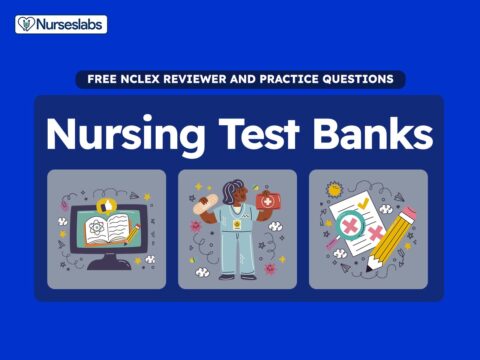

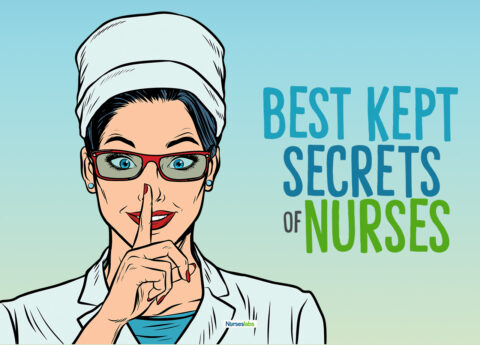










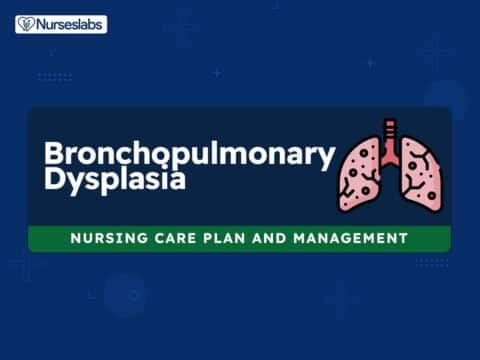
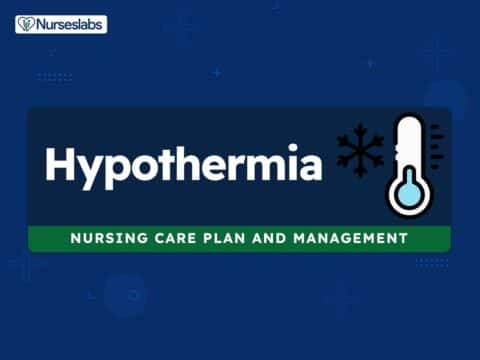
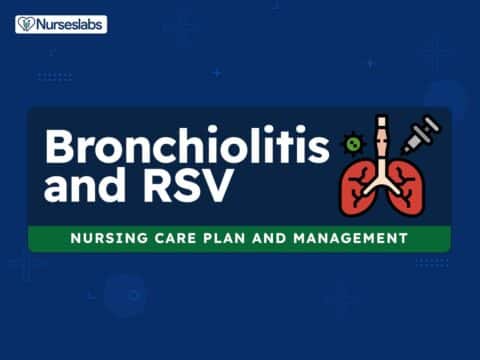
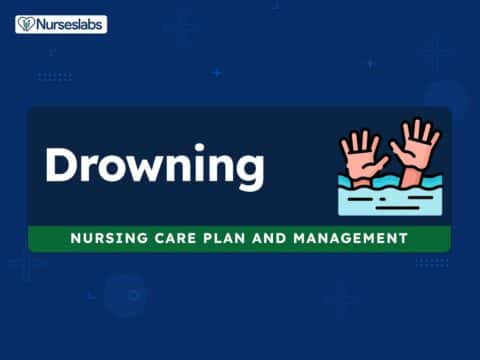
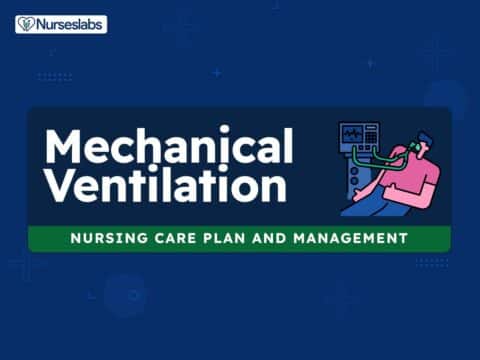

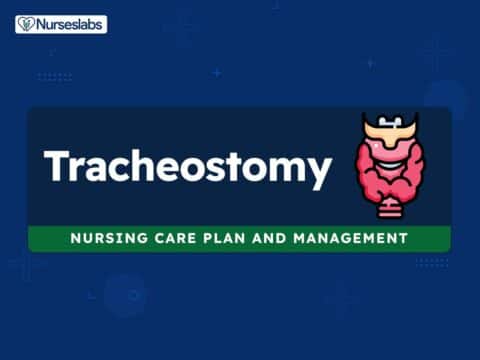
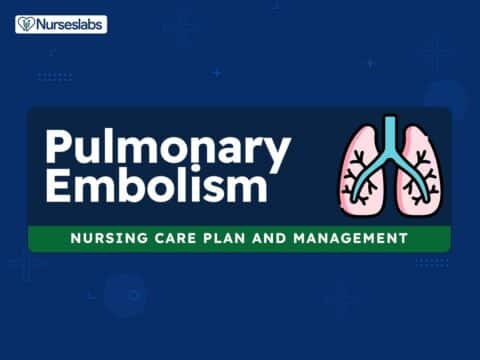




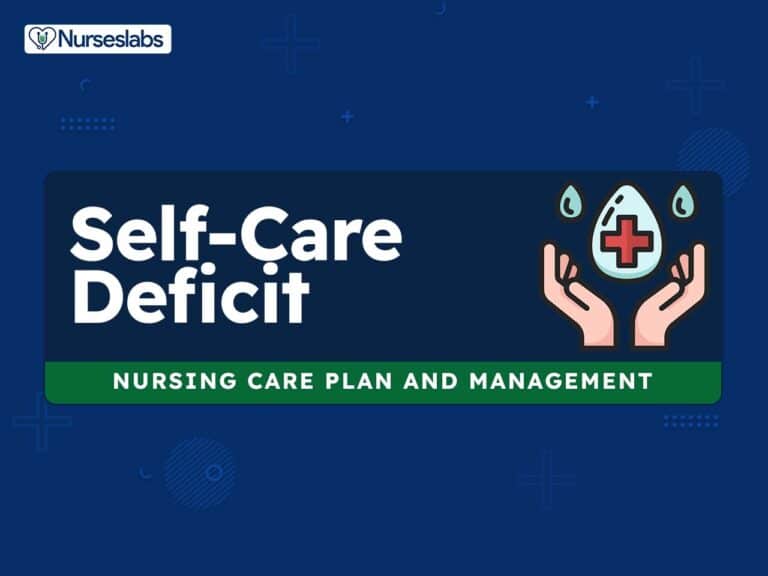


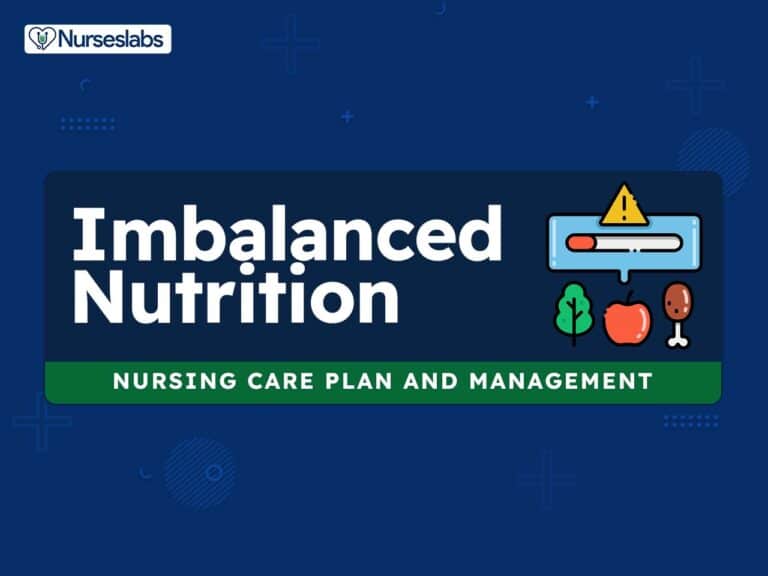

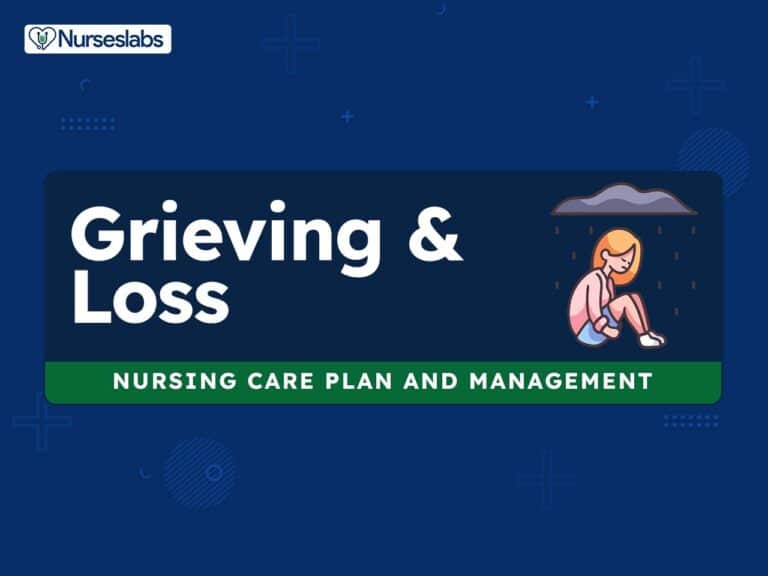
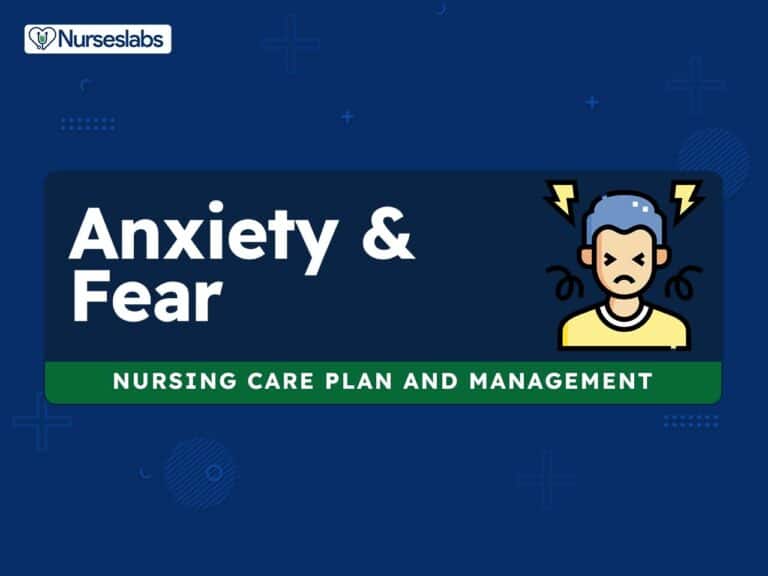


Leave a Comment